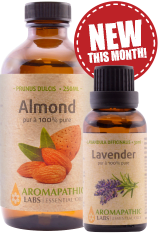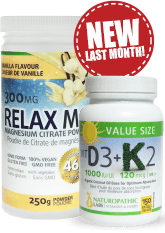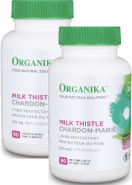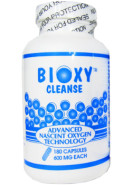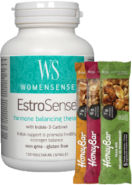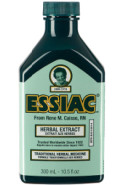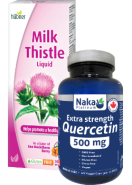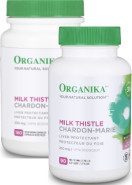Ez Balance (Formerly Candidase) - 84 Caps - Enzymedica
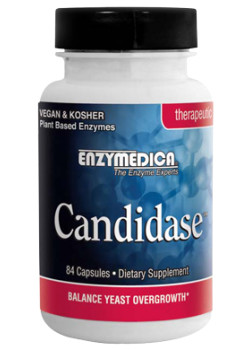
We're sorry, we no longer carry this item.
Check These out
Suggested, Similar, & Related Products:
Or, Shop our Latest Deals:
Shop Now >- 60,000 CU
- Cellulase Thera-blend
- 230,000 HUT
- Protease Thera-blend
Format
 Capsules
Capsules
84 Caps
Dosage
Take Candidase for moderate symptoms of yeastTake Candidase for moderate symptoms of yeast overgrowth take 2 capsules, 3 times a day at least 1/2 hour before or 2 hours after a meal for 7 days (for maintenance 2 a day.
Important Information
Free of all common allergens, including: wheat, dairy, eggs, corn, soy, and yeast.
- Combines Cellulase and Protease enzymes formulated to manage yeast overgrowth
- Helps remove undigested fiber in the colon
- Aids the breakdown and removal of excess mucous
- Breaks down fungus and prevents its overgrowth
- Easy to swallow capsule
Related Videos
No Related VideosArticles by a naturopathic doctor.
Three Reasons Why Enzymes May Help With Candida Yeast Overgrowth
In individuals with yeast overgrowth there is often a large amount of undigested fiber in the large intestine. It is believed that the mucous that the body naturally produces due to the difficulty of digesting this fiber (cellulose) may protect the yeast overgrowth from our body's natural overgrowth prevention mechanisms.
Cellulase is the enzyme that breaks down fiber. It is also the only digestive enzyme our body does not make. By adding cellulase to the diet this fiber can be removed along with the mucous and our body is able to achieve balance.
Fungi is a group of organisms formerly regarded as plants lacking chlorophyll. They can either exist as single cells or make up a multi-cellular body called a mycelium, which consists of filaments known as hyphae. The cell contains some fungal cellulose or a compound called chitin. Chitin is a polysaccharide, or carbohydrate, which is structurally very similar to cellulose. For the same reasons cellulase may help remove undigested fiber in the colon, it has been used in breaking down this "cellulose-like" chitin.
The inside of the cell of yeast is mostly protein. The enzyme protease has the ability to hydrolyze (digest) protein. Protease has been used in clinics all over the world to break down this fungus and prevent its overgrowth. The addition of protease to this formula helps prevent "die-off".
What is TheraBlend?
Enzymedica uses an exclusive Thera-blend process for its protease, lipase, amylase and cellulase. This means that each of these enzymes actually represents multiple blends. For example, there are actually three proteases in the Thera-blend protease. They are blended for their ability to break down numerous bonds of protein in varying pH's. Enzymedica does this at a considerable expense. From a label description Enzymedica also sacrifices active units to provide the best blend possible. A single protease, for example, could produce more active units per milligram than a multiple protease blend, however the active pH would be narrow and the number of protein bonds it could break would be limited to one or two per molecule.
What is Candida?
Candida albicans is a fungus that is normally found in the human gastrointestinal and genital tracts. A candida infection occurs if the fungus overgrows or spreads to other areas of the body. People with candida overgrowth typically feel fatigued and have trouble concentrating which are both caused by the toxin that the yeast produces and which is absorbed easily through the intestinal lining.
Apart from this test, a definitive diagnosis of candidiasis is difficult because the symptoms can be non-specific and vary depending on the part of the body that is involved. For example, candida can cause headaches, fatigue, itching, tingling or burning sensations, memory loss, joint and muscle pain, constipation or diarrhea, PMS prostatitis, and even diabetes or hypothyroidism. The symptoms may be worse in damp or mouldy places. They may also worsen after consuming sugary or yeast-based foods. Visually a candida infection appears as white spots that may grow together. The skin surrounding the spots is very red. There may be a white, curdly discharge with a yeasty smell.
Conventional treatment of candida involves antifungal agents applied topically or taken orally. These agents take care of the current infection but do not address the root cause of the infection. Candida often returns and the strains become drug resistant.
Control Candida through Diet
Dietary therapy depends upon the severity of the condition. It is aimed at starving the yeast of its food source, sugar. This can result in flu-like symptoms that are due to the toxins that are released as the yeast die. The symptoms will go away once the yeast is under control. They can be countered by drinking lots of filtered water and taking in lots of fibre.
The most severe dietary restrictions involve a total elimination of all sugar, yeast and fungal products from the diet. This includes fruit, aged cheese, alcohol, baked goods, chocolate, fermented foods, gluten containing grains, ham, honey and all sweeteners, nut butters, potatoes, mushrooms, soy sauce, sprouts and vinegar
Less severe cases restrict all of the above-mentioned products for a short period of time and then allow some products back into the diet. Vegetables, fish and gluten free grains are the bulk of the diet. Live yogurt or other products containing live bacterial cultures can be added at a later time.
Some of these are common health concerns that create an environment in the body that allows yeast to grow out of control, while others are environmental factors. Here is a list of some (but not all) factors that can leave you predisposed to developing candida overgrowth:
- Low thyroid - The lower body temperature hypothyroid creates creates a suitable environment for yeast to proliferate
- Hypoglycemia / Diabetes - Blood sugar fluctuations and cravings for sweet foods can give the yeast more of the carbs it needs to ingest to grow
- Antibiotic use - The use of antibiotic medications can kill the natural friendly bacteria that helps keep our intestines and digestion healthy
- Stress - Extended stress can exhaust your adrenal glands, thus lowering your body temperature
- Menopause or PMS - Each of these causes hormonal fluctuations that can boost growth of yeast
- Intestinal toxicity - Yeast proliferate in a toxic colon with accumulated waste matter
- Low immunity - Normally the immune system will keep yeast in check, but if the immune system is not functioning optimally, yeast grows easily
- Leaky gut - Small perforations in the intestinal lining harbour yeast cells
- Reviews
- POST A NEW REVIEW


